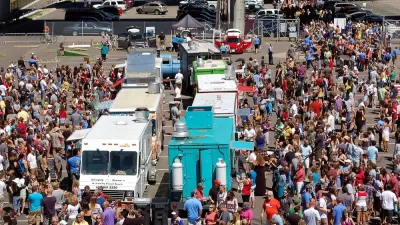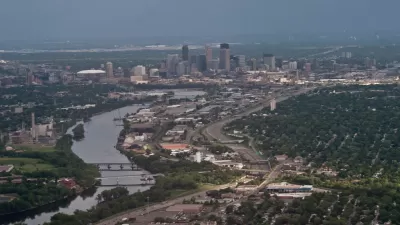The leadership of neighborhood associations does not reflect the city’s demographics. In the future, funding of the groups could be dependent on reaching diversity benchmarks.

[Updated September 18, 2019] An initiative called Neighborhoods 2020 proposes to connect funding of the city’s neighborhood associations to diversity on the groups’ boards. "The tax district that funneled millions of dollars to the associations is set to expire at the end of this year — with $4.1 million earmarked for 2019 and more for 2020 — and the city says the groups need to change if they want continued city funding," writes Miguel Otárola.
The association boards are not hitting particular benchmarks for representation. In 2018, they reached 50 percent of the goal for people of color and just 33 percent for renters. As the percentage of nonwhite residents and renters in Minneapolis increases, the city wants to ensure the leadership of the neighborhood associations better reflects the communities they serve.
But neighborhood leaders want to see their organizations remain independent of the city. Some associations are also struggling with funding gaps or limited staff resources and any clamp downs on funding will make their work more challenging, say leaders.
FULL STORY: Minneapolis wants to tie funding of neighborhood groups to their diversity

Study: Maui’s Plan to Convert Vacation Rentals to Long-Term Housing Could Cause Nearly $1 Billion Economic Loss
The plan would reduce visitor accommodation by 25,% resulting in 1,900 jobs lost.

North Texas Transit Leaders Tout Benefits of TOD for Growing Region
At a summit focused on transit-oriented development, policymakers discussed how North Texas’ expanded light rail system can serve as a tool for economic growth.

Why Should We Subsidize Public Transportation?
Many public transit agencies face financial stress due to rising costs, declining fare revenue, and declining subsidies. Transit advocates must provide a strong business case for increasing public transit funding.

How to Make US Trains Faster
Changes to boarding platforms and a switch to electric trains could improve U.S. passenger rail service without the added cost of high-speed rail.

Columbia’s Revitalized ‘Loop’ Is a Hub for Local Entrepreneurs
A focus on small businesses is helping a commercial corridor in Columbia, Missouri thrive.

Invasive Insect Threatens Minnesota’s Ash Forests
The Emerald Ash Borer is a rapidly spreading invasive pest threatening Minnesota’s ash trees, and homeowners are encouraged to plant diverse replacement species, avoid moving ash firewood, and monitor for signs of infestation.
Urban Design for Planners 1: Software Tools
This six-course series explores essential urban design concepts using open source software and equips planners with the tools they need to participate fully in the urban design process.
Planning for Universal Design
Learn the tools for implementing Universal Design in planning regulations.
City of Santa Clarita
Ascent Environmental
Institute for Housing and Urban Development Studies (IHS)
City of Grandview
Harvard GSD Executive Education
Toledo-Lucas County Plan Commissions
Salt Lake City
NYU Wagner Graduate School of Public Service





























